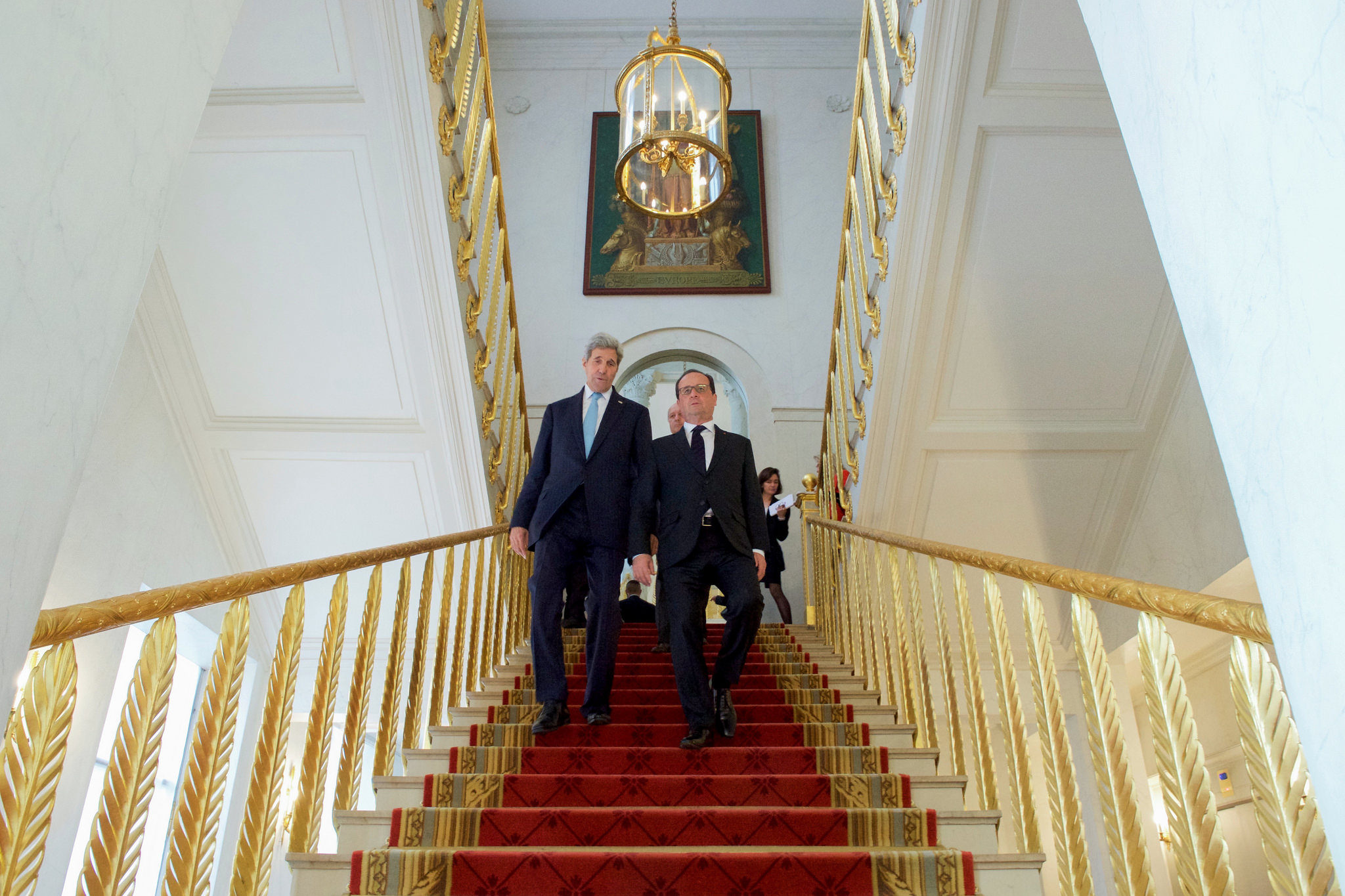
Just a short while ago it seemed that the Islamic militant group Hamas had everything to gain by moderation and had little interest in escalating tensions with Israel. As I wrote previously on this blog, Egyptian president Morsi’s ouster was a disaster for Hamas. Since late last year, Egypt’s crackdown on the tunnels into Gaza and loss of support left Hamas struggling to pay the salaries of its civil servants and witnessing a slide in public opinion polls. The unity deal not only gave Hamas a bump in the polls, but also promised financial relief and the prospect of improved access to the Rafah crossing with Egypt. Of course, all these incentives were dependent on maintaining quiet.
And then we have the kidnapping and murder of three teenage Israeli settlers in the West Bank, an uptick in rocket fire, this July 4th screed to warn of hellfire and brimstone and then, as of July 7, 2014, Hamas made good on the promises in their most recent screed and lobbed there rockets as far as the outskirts of Jerusalem. And as Israeli airstrikes drove up the number of Palestinian dead, Hamas, almost gleefully, warned airlines to stay clear of Israel’s Ben Gurion airport.
So what gives? After upholding a ceasefire agreement for almost two years and swallowing the crow sandwich that was the unity deal, why let loose and risk it all just for the pleasure of proving what big rockets they have?
At the risk of sounding Kerry-esque, the simple truth is that Hamas was against escalation until it was for it. The chain of events since those teens were seized en-route from Jerusalem has steadily eroded Hamas’ room to maneuver and backed it, inexorably, into a corner where it had to chose between the Russian roulette of escalation and irrelevance. It chose the former — a high stakes gamble to reclaim the mantle of resistor in chief on behalf of the struggle and shore up its tenuous stake in the Palestinian marketplace.
To a large degree, Shlomi Eldar gets it mostly right here when he says that Hamas’ main objective is to avoid looking like a defeated movement. What it really can’t afford to look like is a religiously conservative version of Fatah: weak, ineffective and seen as trading a continued hold on power for continued occupation. While the business of governing the fractious Gaza Strip has forced Hamas to make compromises in order to pay the bills and keep the sewage from overflowing, these compromises have required enforcing the November 2012 ceasefire on all the resistance factions in the strip. This is no easy task in good times (or not so bad times), but with the popular mood turning from generally irritated to downright irate, groups like Islamic Jihad, the PFLP and other new challengers smell blood in the water.
According to this very convoluted report, there was a meeting in Gaza around July 2nd in which Hamas apparently tried to convince the various armed factions to uphold the truce. They failed. The other factions in the meeting saw no reason to uphold a truce, especially since the newly formed government of national consensus decided not to pay the salaries of Gazan civil servants as supposedly promised in the unity deal. The street wanted escalation and so they would have it, calls for moderation be damed.
The IDF claims that there were around 5 or so rockets being fired out of Gaza on a daily basis throughout the month of June. Those rockets appear to have been of the limited range variety. From July 1, the number of rockets increases slightly: to 10, 15, 20 and finally 40, however the range is the same. This pattern concurs with the assertion that the early round of missiles was largely the work of the PFLP or other factions with less firepower and an interest in demonstrating their resistance bonafides. It is not until July 7, after Israel struck a tunnel and killed 7 Hamas militants that Hamas unleashed its long-range arsenal and the overall number of launches jumps to over 80.
In other words, the macabre peeing contests currently taking place is not between Israel and Hamas, nor even Hamas and the PA, but between Hamas and the rest of the resistance camp. Real resistance movements can hit Tel Aviv or threaten to close down Ben Gurion airport; the rest are short range wannabes.
As was pointed out here, the murder/kidnapping in the West Bank demonstrates the extent to which Hamas has lost control. The suggestion that attackers planned to murder the teens from the start further confirms that the objective was to incite violence, undermine the unity deal and punish Hamas for even hinting at the prospect of moderation. Hostage negotiations require calm; murder brings swift retribution. While Hamas may have initially tried to manage the pace and scope of escalation, as the spiral of tit-for-tat increased in size and frequency, it came out of the corner swinging.
This escalation is a high-stakes, high-risk gamble made in effort to disprove its weakness, reassert control over its ranks and distance itself from chargers it has sold out in the interest of money and power like its Fatah rivals. There is also a ‘use it or lose it’ element to the rocket strikes. Most of this material, especially the long range stuff, was smuggled in overland from Sudan via Sinai. With a new regime in control in Egypt, that road is closed. As Israel’s strikes into the strip grew more ferocious, Hamas probably calculated they best launch them before they were vaporized.
In the end, this gamble may pay off. The Hamas leadership is aware that neither Netanyahu, President Sisi, nor President Obama want to see an all-out ground war in Gaza. All indications are that a ceasefire will be brokered before it gets to that point. Of course, in the fog and friction that currently has hold over the densely populated strip, neither side may be able to prevent the whirlwind they have sown.
Nevertheless, when a ceasefire is eventually reached — which it will be at the end of the day — Israel far prefers Hamas to chaos, and Hamas may gain access to the border and other perks, like the re-release of re-arrested prisoners that it can claim as the fruits of its righteous struggle. If such an outcome is on the account of a few hundred Palestinian civilians, so be it. Resistance after all, is a sacred endeavor, especially when it raises market share.






4 comments
The anatomy of polarization: The parallels between what disconnected crazies in Palestine have been doing to Hamas and what the Tea Party has been doing to establishment Republicans are more than interesting.
Please see below to understand the terrible life of Gazans.
They are some 1.7 million concentration camp members being slowly gassed to death.
Please check this out to understand that the majority population in Gaza are refugees made homeless by Israelis who took their home in 1948 and other years and how literally generations have lived in suffering ever since but especially in the last 8 years of the siege of Gaza and prevention of almost everything in and out by Israel.
http://www.youtube.com/watch?v=9ZRgzChgaGI
This torture and killing is subsidized by our hard earned tax money being sent to Israel for the last several decades.